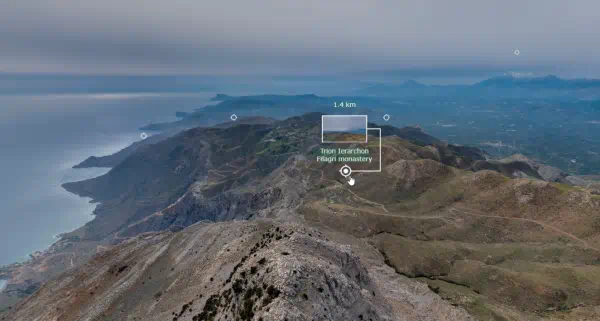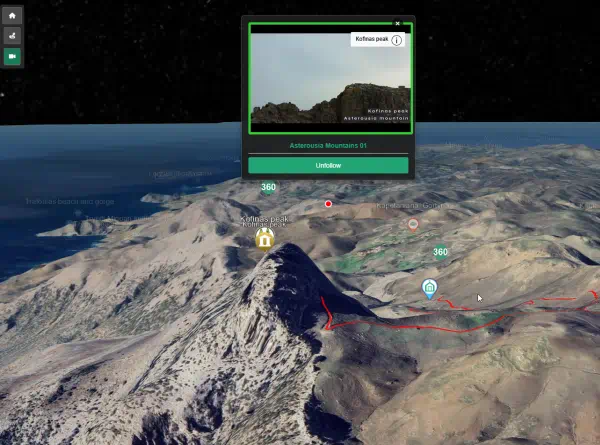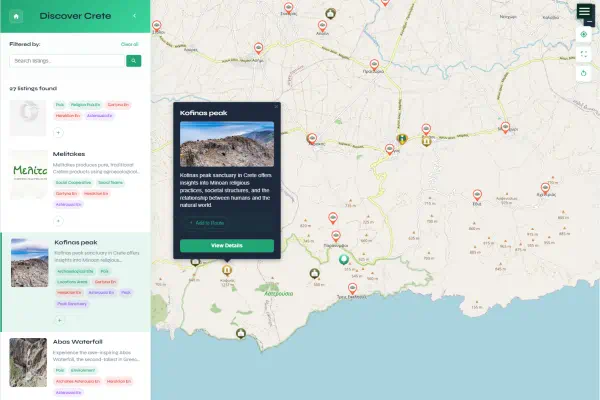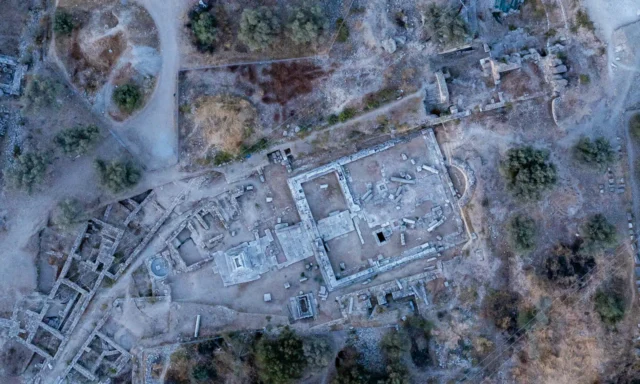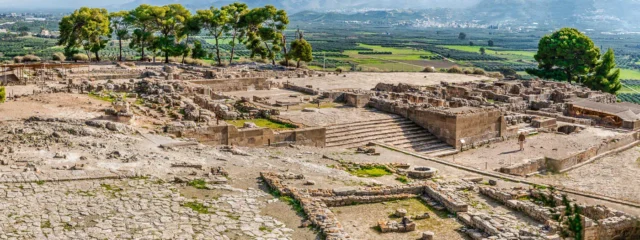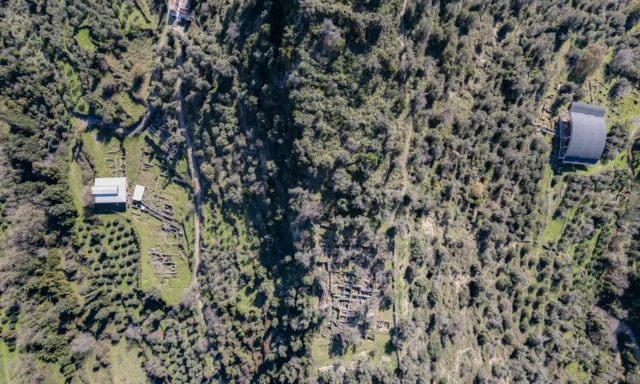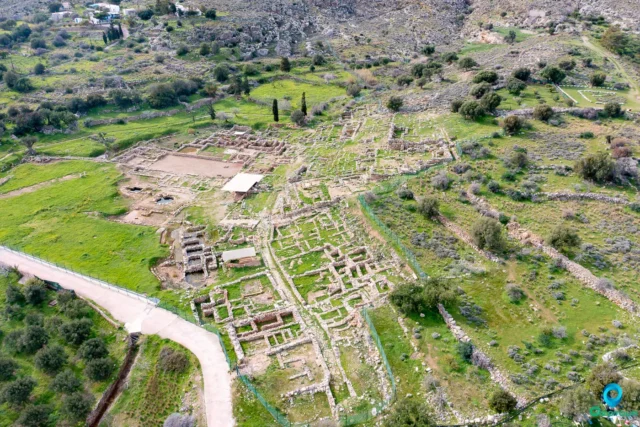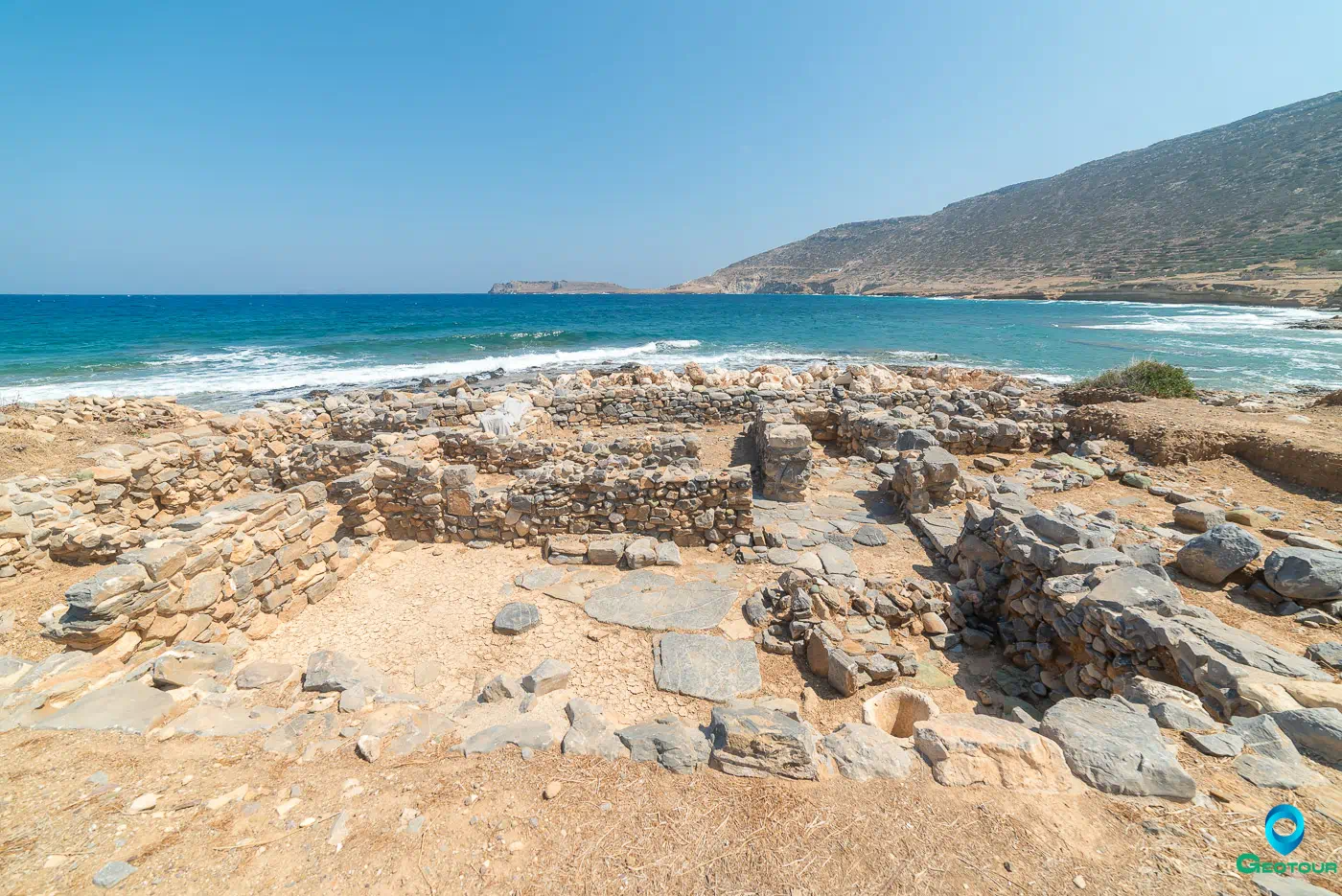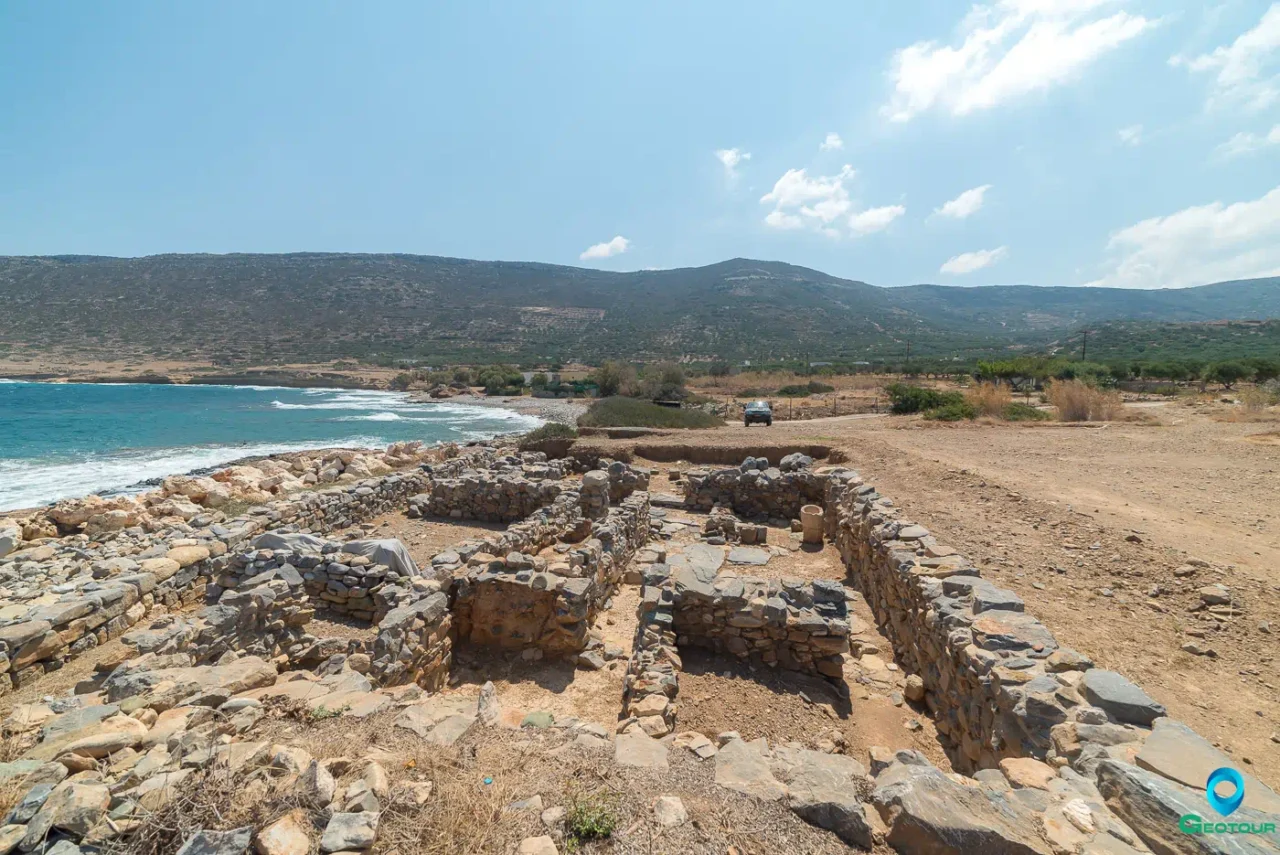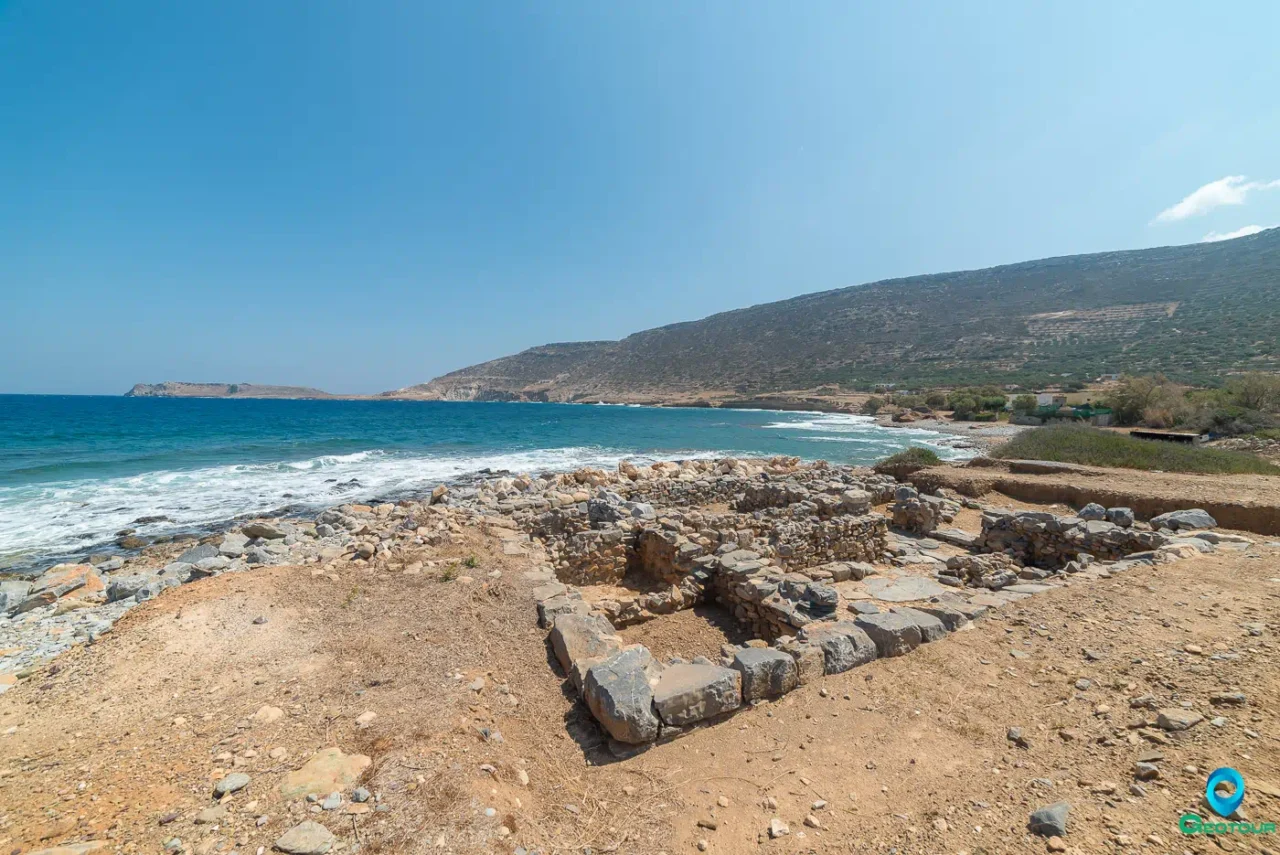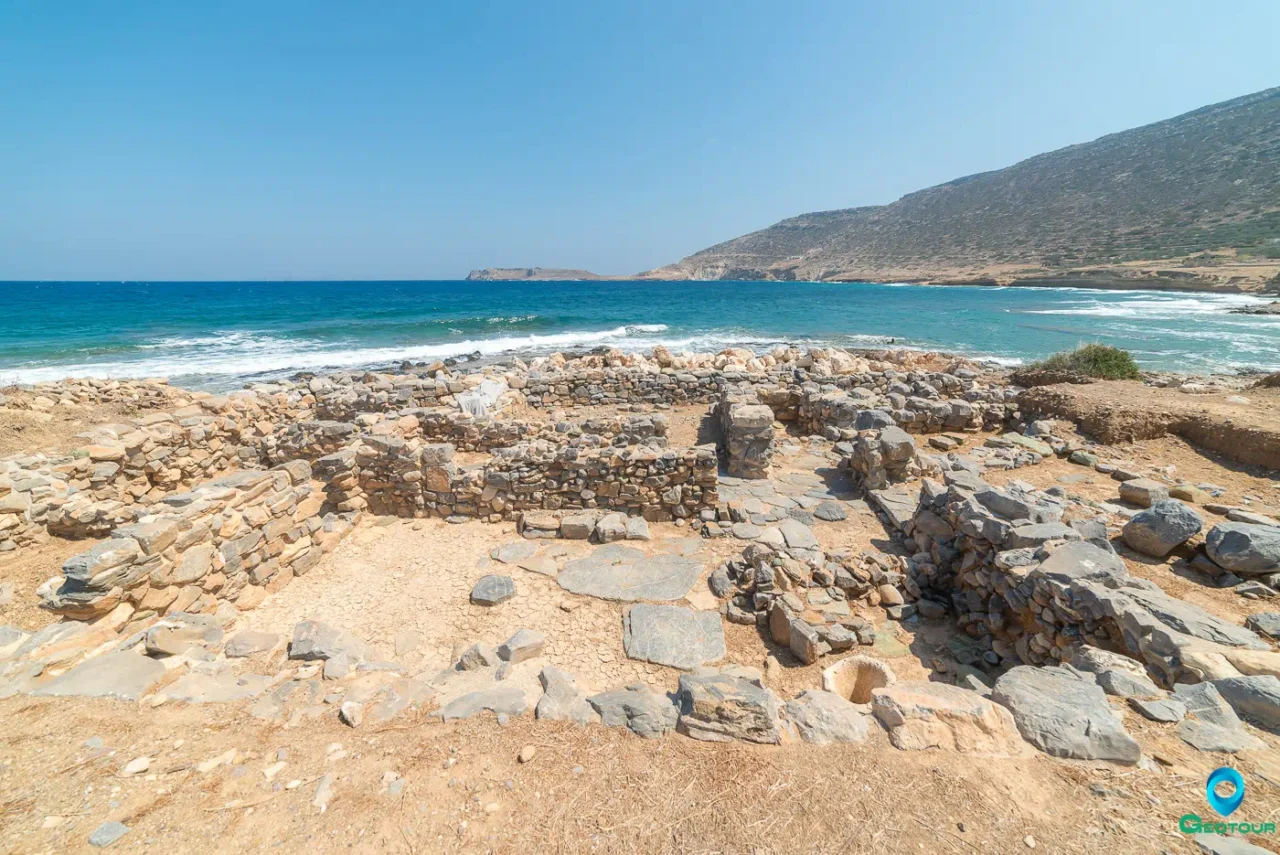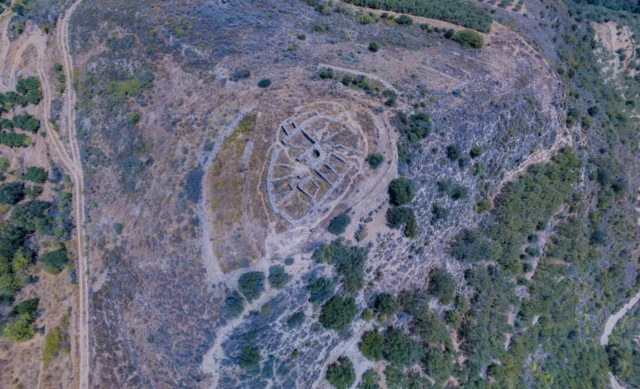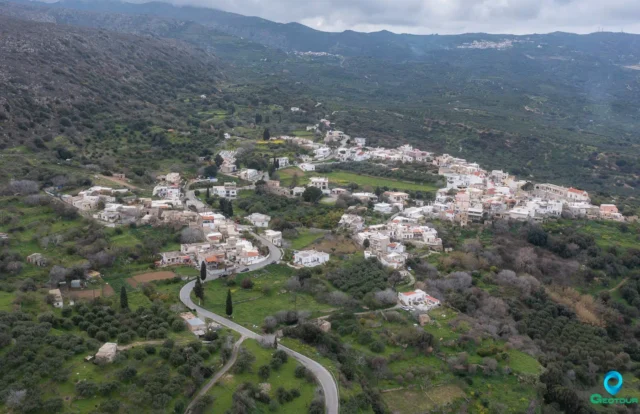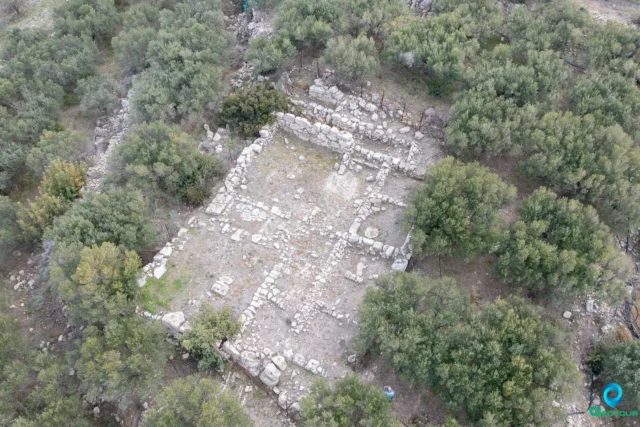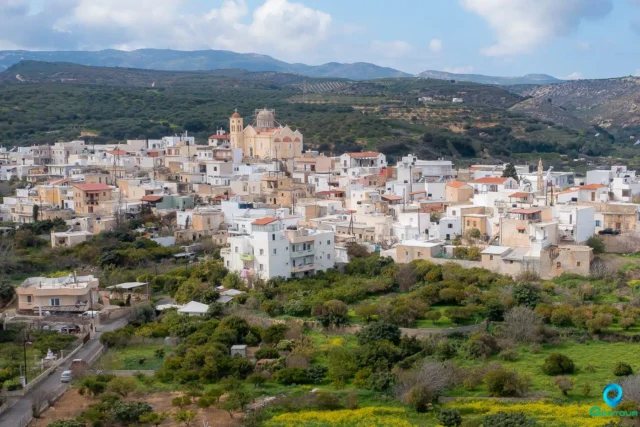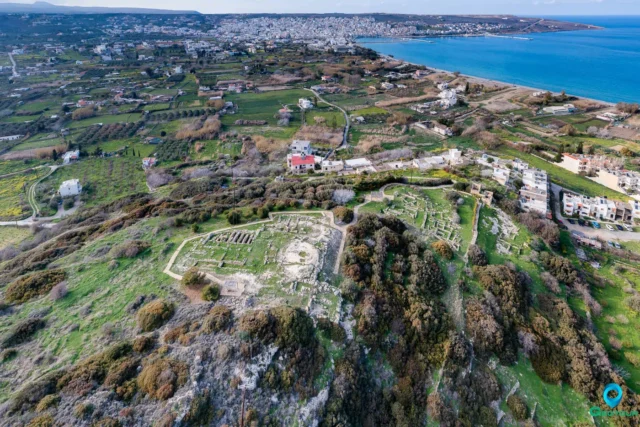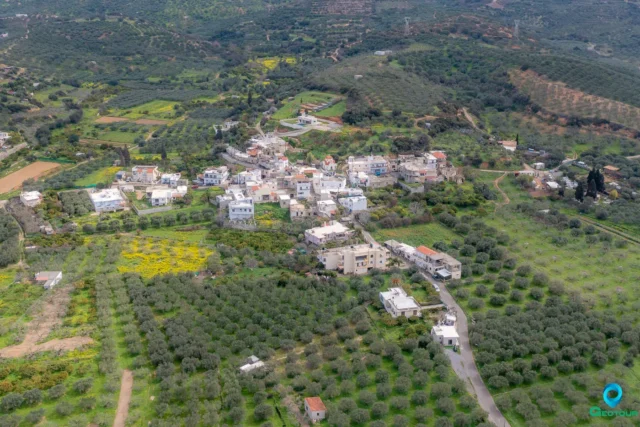The Minoan harbor town of Papadiokampos is situated on the coast of Crete, between Mochlos and Petras. The settlement lies along a 250m stretch of cliff that has been eroded by storm waves over the past 3,500 years. Papadiokampos features remains of houses dating back to the Protopalatial and Neopalatial periods. Excavations have focused on Late Minoan I (LM I) houses, particularly House A.1. The site provides insights into the lives of Minoan farmers and fishermen in the 15th century BC.
Historical Periods
The Minoan harbor town of Papadiokampos saw activity during several key periods of Minoan civilization. These include the Protopalatial, Neopalatial, and Late Minoan I (LM I) periods.
- Protopalatial Period: The sources indicate evidence of Protopalatial occupation at Papadiokampos, with the construction of the town coinciding with the building of the first palace at Petras. Architectural remains from this period are limited to a few walls in Area C, and these do not yet form any recognizable plan. The pottery from the MM II levels provides a record of the local economy and helps to distinguish production at Papadiokampos from other sites in the region.
- Neopalatial Period: Papadiokampos appears to have flourished during the Neopalatial period. House A.1, which has been a focal point of excavations, dates to this era. The Neopalatial period is characterized by extensive reuse or rebuilding of structures, such as House II.1 at Petras and buildings at Hagios Georgios, Achladia, and Papadiokampos.
- Late Minoan I (LM I) Period: The town met a destructive end in the LM IB period. House A.1 offers a detailed picture of three meals in preparation when disaster struck. The occupants of House A.1 appear to have left suddenly due to this destruction.
Connections to Petras
Papadiokampos seems to have been closely connected to Petras. The construction of Papadiokampos coincided with the building of the first palace at Petras. A jar identified as an import from Petras was found in the MM II levels of Area C at Papadiokampos, indicating a relationship between the two sites in MM II and LM IB. Some scholars suggest that Papadiokampos may have formed the western frontier of the Petras palace’s territory. Linear patterns of communication existed as a Neopalatial phenomenon, with other forms of communication in earlier periods.
Key Historical Events
- Destruction: Disaster struck Papadiokampos, including House A.1, during the Late Minoan IB period. This destruction is associated with the Theran (Santorini) volcanic eruption. Evidence from House A.1 indicates a sudden and destructive event, rather than a gradual abandonment. The destruction is not just evidenced by fire, but also by blocks fallen from the central court of the palace.
- Abandonment: The occupants of House A.1 left suddenly because of the destruction. Botanical and faunal remains indicate that at least three meals were in preparation when the destruction occurred. The inhabitants did not have time to collect their valuables, suggesting they left in haste.
Archaeological Discoveries
- Excavations:
- Excavations in 2007 and 2008 focused on House A.1, a Neopalatial house at the western edge of the settlement.
- The project employed intensive methods, such as the flotation of standard and intensive soil samples from every level, particularly the floors, with approximately 360 soil samples taken from ten rooms.
- Samples for chemical residue analysis were also collected from 500 ceramic vessels and several ground stone tools found in the house.
- Notable Artifacts:
- Ceramic vessels: The site yielded a variety of ceramic vessels, including ten tripod cooking pots with spouts, four cooking dishes with spouts, and two cooking jars. Some of these were found on hearths, suggesting considerable cooking activity. A misfired jar decorated with the head of an agrimi (wild goat) was also found, with its contents spilled, near the fire. This contained what has been interpreted as a Minoan recipe for seafood soup: limpets, top shells, and crab.
- Stone tools: House A.1 contained a small oven and a notable number of saddle querns and pounders. Starch analysis on contemporary Late Minoan querns from Malia suggests these tools were used for grinding cereals. A gourna (stone basin) at the southern end of Room 5 may have been used for crushing grapes for wine production or olives for oil.
- Metal artifacts: Several metal artifacts were discovered, including a dagger, knife, lead weight, and bronze strips.
- Other artifacts: Two carved stone beads were among the finds.
- Architectural Remains:
- House A.1: The architecture of House A.1 is well-preserved. It was a two-story structure built of stone, with mud-brick interior walls on the upper story. The house had nine rooms and an exterior court on the ground floor, with a staircase providing access to a similar number of spaces upstairs.
- Vestibule (Room 6): The main entrance to the house was on the south side, leading from the exterior court to a paved vestibule, Room 6. Four doors in this room connected to different parts of the house.
- Current State: The architecture of House A.1 is well-preserved, allowing for reconstruction of its original plan. Analysis continues on the artifacts and ecofacts recovered from the site.
Reasoning and Elaboration
The artifacts discovered in House A.1 provide insights into the daily life and activities of its inhabitants. The ceramic vessels, particularly the cooking pots and dishes, suggest a focus on food preparation. The presence of saddle querns and pounders indicates crop processing, while the discovery of grape seeds and olive remains points to wine and oil production. The metal artifacts and stone beads suggest the presence of personal items and tools.
The architectural remains of House A.1 further enhance our understanding of Minoan domestic architecture. The layout of the house, with its rooms and vestibule, provides insights into how the space was used and organized. The presence of a staircase indicates a second story, suggesting a multi-level dwelling.
The sudden abandonment of House A.1, evidenced by the meals left in preparation and the valuables left behind, paints a vivid picture of the disaster that struck Papadiokampos.
Delving into the cultural and economic context of Papadiokampos, one can gain insights into the lives of its inhabitants, their daily activities, and their interactions with the surrounding environment.
Economic Activities
- Agriculture and Fishing: The inhabitants of Papadiokampos were engaged in both farming and fishing activities. The heavy reliance on shellfish, particularly limpets and top shells, indicates a significant marine-based component to their diet and economy. The presence of tools like saddle querns and pounders, along with carbonized remains of olives, suggests that crop processing was also a key part of their agricultural practices. The inhabitants grew grapes and alternated crops of legumes and cereals. The combination of agriculture and fishing highlights a mixed economy, utilizing both land and sea resources for sustenance.
- Wine Production: There is tangible evidence pointing towards wine production at Papadiokampos. Discoveries of grape seeds and spouted clay basins imply that the inhabitants were actively involved in the process of making wine. A gourna (stone basin) found in Room 5 may have been used for crushing grapes, and the proximity of spouted clay basins further supports this interpretation. The presence of serving and drinking vessels in both Houses A.1 and B.1 underscores the consumption of wine, suggesting that it was a notable aspect of their cultural and economic practices.
- Metal and Textile Trading: While House A.1 reflects a more modest lifestyle, House B.1 presents evidence of metal and textile trading. The finds from House B.1, including base and precious metals and exotic textile equipment, suggest that its occupants were involved in producing and trading these goods. This difference between the two houses indicates status distinctions among the residents of Papadiokampos. The fact that House B.1 also contained an impressive number of storage vessels for products like wine and oil further supports the notion of trade and economic activity beyond mere subsistence.
Cultural Practices
- Dining: The remains discovered in House A.1 offer a detailed glimpse into the dining habits of its residents. The botanical and faunal remains indicate that at least three meals were in preparation when the destruction occurred, suggesting sudden disruption during meal preparation. The variety of cooking vessels, such as tripod cooking pots and cooking dishes, underscores the significance of cooked meals in their daily lives. The discovery of a misfired jar containing a “recipe” for seafood soup—limpets, top shells, and crab—highlights their culinary preferences.
- Diet: The diet at Papadiokampos seems to have heavily relied on shellfish. In House A.1, shells constituted a significant portion of the faunal remains. The inhabitants collected large numbers of limpets, top shells, and crabs from the shallow waters off the rocky coasts in the area. While land animals like cattle, sheep/goat, and pig were also consumed, the overwhelming presence of shellfish in the archaeological record suggests it was a staple food. This dietary pattern may reflect the accessibility of marine resources and the inhabitants’ adaptation to their coastal environment.
- Craft Specialization: The discovery of purple dye made from crushed fragments of Hexaplex trunculus shells indicates the presence of craft specialization at Papadiokampos. The dye was found in MM II levels, with one large jar full of such shells. The production of purple dye signifies a level of economic activity beyond basic subsistence, potentially involving trade and exchange with other sites in the region.
- Social Hierarchy: The contrast between House A.1 and House B.1 offers insights into the social hierarchy within Papadiokampos. House B.1 suggests a more affluent group involved in metal and textile trading, while House A.1 indicates a group of more limited means. The differences in the quality of pottery, presence of exotic goods, and discard patterns point to socio-economic distinctions among the inhabitants. This suggests that Papadiokampos was not a homogenous community but had varying levels of wealth and status.
Key Points
- Location and Accessibility: Coastal Crete, between Mochlos and Petras.
- Active Historical Periods: Protopalatial, Neopalatial, and Late Minoan I.
- Historical Significance: Provides insights into the daily life, economic activities, and cultural practices of Minoan farmers and fishermen.
- Current Status: House A.1 is well-preserved, with ongoing analysis of artifacts and ecofacts.
References
- Andrew J. Koh, Miriam G. Clinton (2015). Contextualizing the Late Minoan Tombs of the Western Siteia Mountains, Journal of Eastern Mediterranean Archaeology and Heritage Studies, Vol. 3 No. 3
- Brogan, T. M., Sofianou, C., Morrison, J. E., Mylonas, D., & Margaritis, E. (2013). Living off the fruits of the sea: new evidence for dining at Papadiokampos, Crete, Proceedings of the International Conference held at the Netherlands Institute at Athens on 22-24 March 2010
- Chrysa Soianou & Thomas M. Brogan (2010). Papadiokampos and the Siteia Bay in the second millennium bc: exploring patterns of regional hierarchy and exchange in eastern Crete, in Petras, Siteia: 25 years of excavations and studies ; acts of a two-day conference held at the Danish Institute at Athens, 9-10 October 2010
- Driessen, J., & Langohr, C. (2014). Recent Developments in the Archaeology of Minoan Crete. https://doi.org/10.2143/PHA.20.1.3064537

